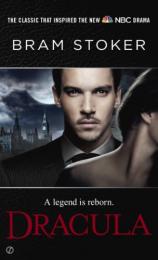Reading Group Guide
Discussion Questions
Dracula

1.)Central to Bram Stoker’s novel DRACULA is the tension between earthly life and immortality of the soul. How does Count Dracula’s aggression jeopardize his victims’ hopes for eternal rest? How do their views of death shape the ways in which Mina Harker, Dr. Van Helsing, and Arthur Holmwood confront Count Dracula’s gathering threat?
2.)Do you think DRACULA is a religious novel? What is the significance of the role played by holy objects in warding off the vampire’s damnation? Does the author mean to satirize the piety and superstition of Transylvania town folk, or to strengthen the power of their beliefs?
3.)Count Dracula’s thirst for blood is closely tied to sexual desire. How does Mina Harker thwart his physical --- and psychological --- advances? How does Lucy Westenra’s vulnerability affect his bodily appetites? How does Jonathan Harker fend off the female vampires who nearly prove his undoing? What conclusions does the book draw about the link between seduction and evil? Sexual purity and innocence? What are the contrasts between love and lust in DRACULA? How does passion complicate efforts to hasten Count Dracula’s demise?
4.)The vampires in DRACULA seek beauty and youth as principal objects of conquest. Why do they fixate on these two ideals? Are these twin obsessions specific to the time and place of the novel, or do we still grapple with their hold over us today? Does the author provide any positive examples of aging? In the novel, how do youth and naiveté take a back seat to knowledge and experience?
5.)At the tender age of 19, Lucy Westenra has had multiple suitors and three proposals of marriage. What impact does her choice of her groom-to-be have on the two she rejects? How do all three come together in her time of desperate need?
6.)What accounts for the sudden disappearance --- and ultimate reemergence --- of Lucy’s illness? Why does Dr. Van Helsing suspect unnatural causes as the root of Lucy’s ailment? Why does he frantically block Arthur Holmwood from giving his fiancée a farewell kiss? What relationship does Lucy have to “the Bloofer Lady”?
7.)DRACULA pits science and reason against superstition and the occult. Are these opposing philosophies ever reconciled? Does the truth of one argue against the existence of the other? How do the two doctors, John Seward and Abraham Van Helsing, approach the matter differently? Is Seward’s skepticism ever completely overcome? How does R.M. Renfield contribute to Seward’s education? What is the significance of Seward’s diagnosis that Renfield tries “to absorb as many lives as he can”?
8.)Discuss the role of dreams in Dracula. Why does Jonathan Harker assume he must have dreamed his encounter with female vampires at Count Dracula’s castle? Why does Lucy’s illness worsen when she is sleeping? How does the novel blur the distinction between sleep and wakefulness? What do Mina Harker’s vivid dreams and evening lethargy indicate about her future? How does Count Dracula manipulate dreams to alter his victims’ memories?
9.)Bram Stoker is a master at setting tone. In DRACULA, how do shifts in weather signify changes in mood? How does the storm recorded in Count Dracula’s vessel’s log mirror the tumultuousness of life below deck? What power do vampires have over their physical environment? How do moonlight and shadow enhance the effectiveness of Stoker’s tale? How does the verdant and flowering England work both for and against Count Dracula’s dastardly plans?
10.)As seen in DRACULA, vampires alter their size and shape at will. How does this talent enable Count Dracula to escape his dogged pursuers? Why does a ring of terrifying wolves surround Jonathan Harker on his way to Count Dracula’s castle? What is the origin of the oversized dog seen leaving the mysterious Russian schooner? In what ways do the novel’s non-vampires themselves effect emotional and physiological change? What does this emphasis on transformation suggest about the author’s views on identity?








